#pagan places
Text



#photography#dark#sky#moon#clouds#magic#pagan#sea#ocean#atmosphere#ambient#mood#ritual#night#life#death#beautiful places
5K notes
·
View notes
Text
See, I personally find this quest to find pagan/pre-Christian elements in Welsh/Irish literature quite unnerving - I don't know about anyone else.
There's something to be said about genuinely discovering pre-Christian elements in a narrative or story and that being where evidence and study has led you. But I see some people on this fruitless quest to find pagan elements in very Christian texts and sometimes it feels like if no pagan elements can be found, people start making stuff up out of whole cloth - and that can be very dangerous for already not-well known texts in minoritised languages!
There's already so much misinformation out there about Irish/Welsh texts and literature in general - so it hurts to see people carelessly adding to the misinformation either out of ignorance or lack of respect for the source material.
I promise you the source material being Christian doesn't ruin it - you can in fact, enjoy these myths without making them into something they're not!
#I feel like general ire towards (particularly) colonial Christianity has informed how people think of and view anything that is associated#with Christianity - and ire towards some of the ills committed in the name of Christianity is very valid actually#but what it isn't is approaching any text written in a Christian context and immediately disregarding it for having anything unique or#insightful to say. And in a Celtic languages context#this can be especially othering and almost fetishistic of an imagined pagan Ireland and Wales which was 'covered up' by Christianity#and that desire for people outside of Ireland and Wales to impose a kind of 'pagan faerie culture' onto the modern countries directly feeds#into false depictions of Ireland and Wales as 'lost in time' or as magical places full of latent pagan culture &c. which can be really#damaging in its own way against people who live in Wales or Ireland or who speak Welsh or Irish#this goes for other Celtic speaking nations too like Scotland Brittany Isle of Man and Cornwall#But Wales and Ireland tend to be the most focused on for this kind of treatment#luke's originals#Welsh#Wales#Cymblr#Irish#Ireland#welsh mythology#irish mythology#irish literature#welsh literature#Arthurian legends#arthurian literature
329 notes
·
View notes
Text
Medieval Hermitage atop Katskhi Pillar, in Georgia (South Caucasus), c. 800-900 CE: this church was built during the Middle Ages; it sits atop a limestone column that has been venerated as a "Pillar of Life" for thousands of years
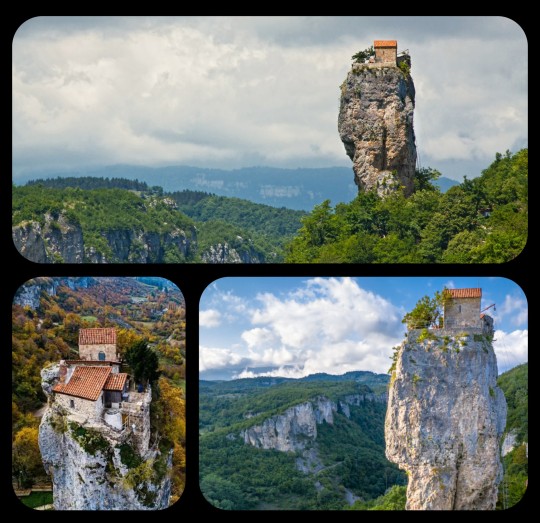
Known as Katskhi Pillar (or Katskhis Sveti), this enormous block of limestone is located in western Georgia, about 10km from the town of Chiatura.
The church that stands atop Katskhi Pillar was originally constructed during the 9th-10th century CE. It was long used as a hermitage for Stylites, who are sometimes referred to as "Pillar Saints" -- Christian ascetics who lived, prayed, and fasted atop pillars, often in total isolation, in an effort to bring themselves closer to God. This tradition originated in Syria during the 5th century CE, when a hermit known as Simeon the Elder purportedly climbed up onto a pillar and then stayed there for nearly 40 years, giving rise (no pun intended) to the Stylites. Stylitism managed to survive for about 1,000 years after its inception, but it gradually began to die out during the late Middle Ages, and by the end of the 16th century, it had essentially gone extinct.
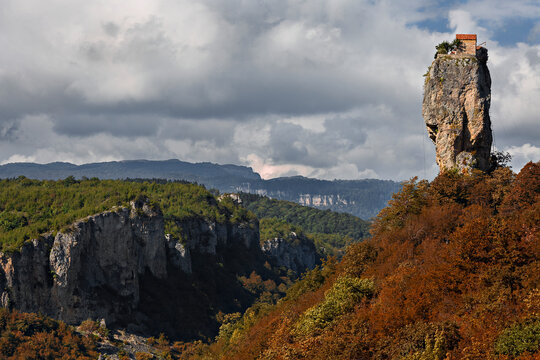
Researchers don't really know how the monks originally gained access to the top of Katskhi Pillar, or how they were able to transport their building materials up to the top of the column. There's evidence that the Stylites were still living at Katskhi Pillar up until the 15th century, but the site was then abandoned shortly thereafter. This was the same period in which Georgia came under Ottoman rule, though it's unclear whether or not that may have played a role in the abandonment of the site.
The hermitage continued to lay abandoned for nearly 500 years after that. No one had been able to gain access to the top of the pillar, and very little was even known about the ruins that lay scattered at the top, as knowledge about the site's origin/history was gradually lost. There are many local legends that emerged as a way to fill in those blanks.
The site was not visited again until July 29th, 1944, when a mountaineer finally ascended to the top of the column with a small team of researchers, and the group performed the first archaeological survey of the ruins. They found that the structure included three hermit cells, a chapel, a wine cellar, and a small crypt; within the crypt lay a single set of human remains, likely belonging to one of the monks who had inhabited the site during the Middle Ages.
A metal ladder (the "stairway to Heaven") was ultimately installed into the side of the pillar, making it much easier for both researchers and tourists to gain access to these ruins.

The hermitage at the top of Katskhi Pillar actually became active again in the early 1990's, when a small group of monks attempted to revive the Stylite tradition. A Georgian Orthodox monk named Maxime Qavtaradze then lived alone at the top of Katskhi Pillar for almost 20 years, beginning in 1995 and ending with his death in 2014. He is now buried at the base of the pillar.
While the hermitage is no longer accessible to the public, and it is currently uninhabited, it's still visited by local monks, who regularly climb up to the church in order to pray. There is also an active monastery complex at the base of the pillar, where a temple known as the Church of the Simeon Stylites is located.

The Church of the Simeon Stylites: this church is located within an active monastery complex that has been built at the base of the pillar; several frescoes and religious icons decorate the walls of the church, and a small shrine containing a 6th century cross is located in the center
There are many lingering questions about the history of Katskhi Pillar, particularly during the pre-Christian era. There is at least some evidence suggesting that it was once the site of votive offerings to pagan deities, as a series of pre-Christian idols have been found buried in the areas that surround the pillar; according to local tradition, the pillar itself was once venerated by the pagan societies that inhabited the area, but it's difficult to determine the extent to which these claims may simply be part of the mythos that surrounds Katskhi Pillar, particularly given its mysterious reputation.
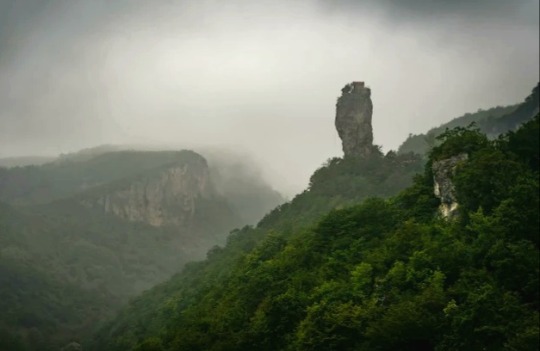
Sources & More Info:
BBC: Georgia's Daring, Death-Defying Pilgrimage
CNN: Katskhi Pillar, the Extraordinary Church where Daring Monks Climb Closer to God
Radio Free Europe: Georgian Monk Renews Tradition, Lives Atop Pillar
Architecture and Asceticism (Ch. 4): Stylitism as a Cultural Trend Between Syria and Georgia
Research Publication from the Georgian National Museum: Katskhi Pillar
Journal of Nomads: Katskhi Pillar, the Most Incredible Cliff Church in the World
Georgian Journal: Georgia's Katskhi Pillar Among World's 20 Wonderfully Serene and Secluded Places
#archaeology#history#anthropology#artifact#medieval architecture#medieval church#Stylites#asceticism#georgia#sakartvelo#katskhi pillar#religion#travel#monastery#paganism#caucasus#medieval europe#christianity#strange places
448 notes
·
View notes
Text
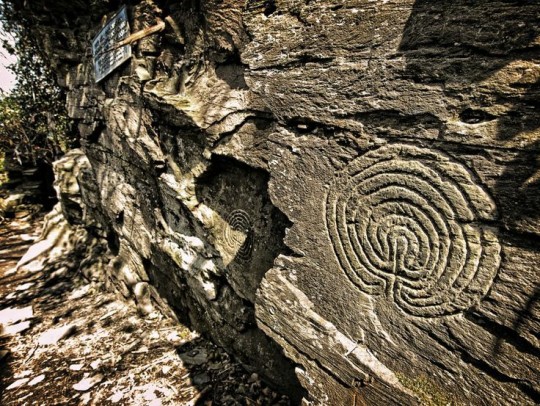

Labyrinth Rock Carving - Tintagel - Cornwall
#labyrinth#carving#stone carving#druidry#druidic#paganism#tintagel#cornwall#england#arthurian site#celtic place
3K notes
·
View notes
Text
every human has this bizarre open wound with bones poking out that they have to constantly sterilise in order to keep it from rotting. and none of them seems to think it's weird.

#also the bones can be pulled off sometimes#and new ones will grow on their place#and they then sacrifice the old ones to a pagan deity in exchange for currency#what the actual fuck#memes#explore#explorepage#funny#fyp#fypツ#hilarious#writers on tumblr#artists on tumblr#female artists#tumblr fyp#teeth#biology#biology memes#humans are weird#humans are space australians
193 notes
·
View notes
Text
Something that gets left out in some eclectic discussions of the celtic fire festivals is that they are the end of one season and the start of another
Imbolg- Start of Spring
Bealtaine- Start of Summer
Lúnasa- Start of Autumn
Samhain- Start of Winter
Which makes sense because in Ireland the seasons are generally defined as:
Spring – February, March, April
Summer – May, June, July
Autumn – August, September, October
Winter – November, December, January
Like if you went up to a random person in Ireland today and asked them what season February is in they’d say Spring.
Seasons are obviously different across the world, in fact many places don’t have 4 seasons so the misunderstanding makes sense but seeing people frame Imbolc as “Oh its not a spring festival its the just bringing back of light” is just factually wrong.
#féile#irish paganism#gaelic paganism#celtic paganism#Irish polytheism#gaelic polytheism#celtic polytheism#gaelpol#iripol#witch#I think other places use the solstaces/equinoxes?#this is a weirdly common thing tho#magic#ireland#mine#witchblr
214 notes
·
View notes
Text


tied by branches
#naturecore#rural#gothic#witchyvibes#lost places#decay#rural gothic#backroads#abandoned house#abandoned#goblincore#forest spirit#witchythings#witchcore#rural decay#nostaliga#nostalgia core#almost nowhere#wooden house#folklore#nordic#dark academia#dark aesthetic#pagan#folk#izba#winter#snow#winter aesthetic#dark winter
56 notes
·
View notes
Text
Limnaios
I call to Dionysos Limnaios,
The God of the marshes,
Whose eyes are soft and grey,
Whose hair is that of soft green moss,
Whose clothes are those of windswept reeds.
I praise the God who stands on boundaries,
Who knows the salty ocean and the fresh springs,
Who knows the deep forest and the shallow pool,
Who keeps watch over the places between.
I praise Him who takes delight in uniting opposites,
Who revels in salty air and sweet water,
Who sings with birds and frogs,
Who dances upon rich and fertile earth.
This is the God whose praises I sing,
Most blessed Limnaios, glorious Dionysos,
God who watches the strange places,
Who is crowned with the glow of will-o-the-wisps.
I have sought and have found You in the marshes.
#in case anyone couldn't tell#i grew up more around salt marshes than regular marshes#definitely hits the dionysian liminality though#places between the ocean and fresh water are pretty liminal places#dionysos#dionysian#dionysus#hellenic polytheism#hellenic polytheist#hellenic pagan#hellenic gods#hellenism#dionysos deity#dionysus deity#paganblr
61 notes
·
View notes
Text




A magic place 💫
#forestcore#cottagecore#green witch#naturecore#pagan#hedge witch#forest#green#germany#nature#woods#magic places#landscape
72 notes
·
View notes
Text
Looking for pagan/ witchy Discord servers? Here's a few I'm in:
Hearthfire House: https://discord.com/invite/p4E3NBu2yW
Raven Masters Keep: https://discord.com/invite/UgVr5dvxg3
Gravekeeper's Inn: https://discord.com/invite/PxrHSnT4gB
Crossing Paths: https://discord.com/invite/Ubvt8te6HY
Rasenna Polytheism: https://discord.com/invite/DmUeMPBusZ
Lavender Apothecary: https://discord.com/invite/KyeGVx6vzt
Everlasting Moon Coven: https://discord.com/invite/wdHnYU7E5H
Most of these have a lot of overlap of the same people on them, and if I remember correctly, they're all godspouse and plural friendly. Obviously gay/ queer friendly or I wouldn't be there.
#witchblr#pagan witch#hellenic polytheism#norse paganism#paganism#godspouse friendly#therian otherkin etc friendly#plural system friendly#pluralkit friendly#queer friendly#witchcraft#witchcraft community#pagan community#pagans of tumblr#pagansim#discord server#hellenic paganism#death worker friendly#very inclusive places tbh#coven#hellenic community#witch community
33 notes
·
View notes
Text

Time to wake earth up!!
Joaldunak in Ituren (Nafarroa) make the cowbells sound to announce earth winter is gone and it has to wake up, and also to cast evil spirits of dark and cold out.
Pic and vid sources
#euskadi#euskal herria#basque country#pais vasco#pays basque#nafarroa#folklore#traditional masquerade#joaldunak#rites#paganism#culture#ituren#travel#places#wanderlust
270 notes
·
View notes
Photo
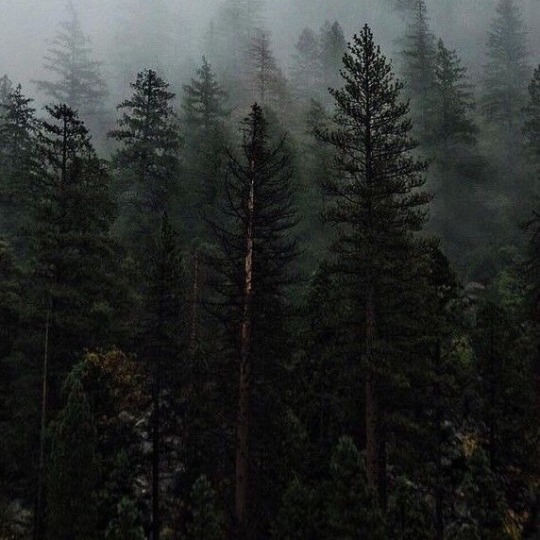


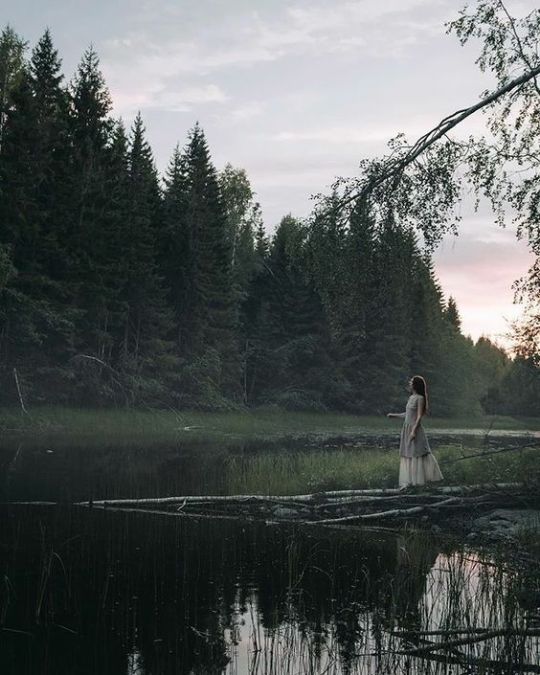
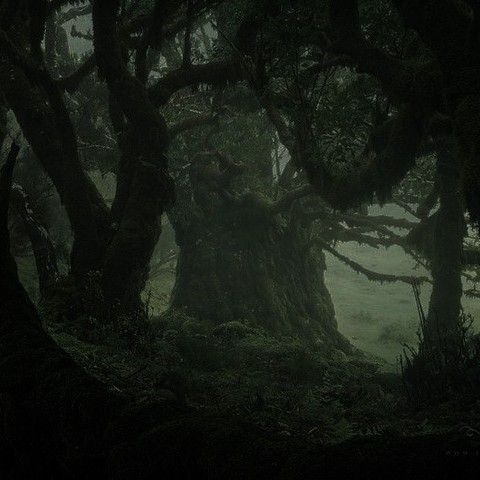
#photography#nature#forest#trees#foggy#lake#river#witch#horse#atmosphere#mood#pagan#nordic#slavic#celtic#freedom#beautiful places#viking#magic#ritual
1K notes
·
View notes
Text
Things That Are Not Closed
Spiritual energy in the body
Smoke used to cleanse
Spirits as companions, mentors, or guides
Poppets
Things That Are Closed
Chakras
Smudging
Spirit/totem animals
Voodoo dolls
No culture owns a concept, but they do own how they interpret and execute that concept. If you're drawn to a closed practice, there's likely a non-closed alternative you can pursue instead.
#self post#meta#||#Seriously. So many cultures have come up with smoke cleansing and you're choosing to appropriate even after being told of alternatives?#Feel free to add onto this post or make corrections.#The conversation around appropriation often falls short in giving people alternatives.#It's a lot harder to stop something than to do something else in its place.#If you're appropriating you're likely not doing it right anyways.#|||#witchblr#witchcraft#witch#witchcraft 101#baby witch#beginner witch#witch tips#pagan#paganblr#wicca#paganism
133 notes
·
View notes
Text

English pagans, 1964
40 notes
·
View notes
Text
An international archaeology project has unearthed the remains of a Roman pagan temple beneath a parking lot in Spello, Italy. The ruins of this ancient structure have been dated to the era of the Roman emperor Constantine, who ruled Rome between 306 and 337 AD.
Constantine's historic conversion to Christianity marked a pivotal moment, as the majority of the Roman Empire still followed the imperial cult religion. The uncovered temple, dedicated to Constantine's alleged divine ancestors, the Flavian dynasty, highlights his efforts to integrate Christian and pagan practices. This challenges previous notions of a swift transition, emphasizing the complex coexistence of religions during Constantine's reign.
Professor Douglas Boin, who leads the project, emphasizes that the temple's existence challenges conventional views of cultural shifts, offering a tangible piece of evidence that blurs the lines between paganism and early Christianity in the Roman Empire.
#Pagan#Constantine#Emperor#temple#Christianity#Roman Places#Roman Temples & Monuments#Roman Empire#Rome#cult#ancient#history#ancient origins
29 notes
·
View notes
